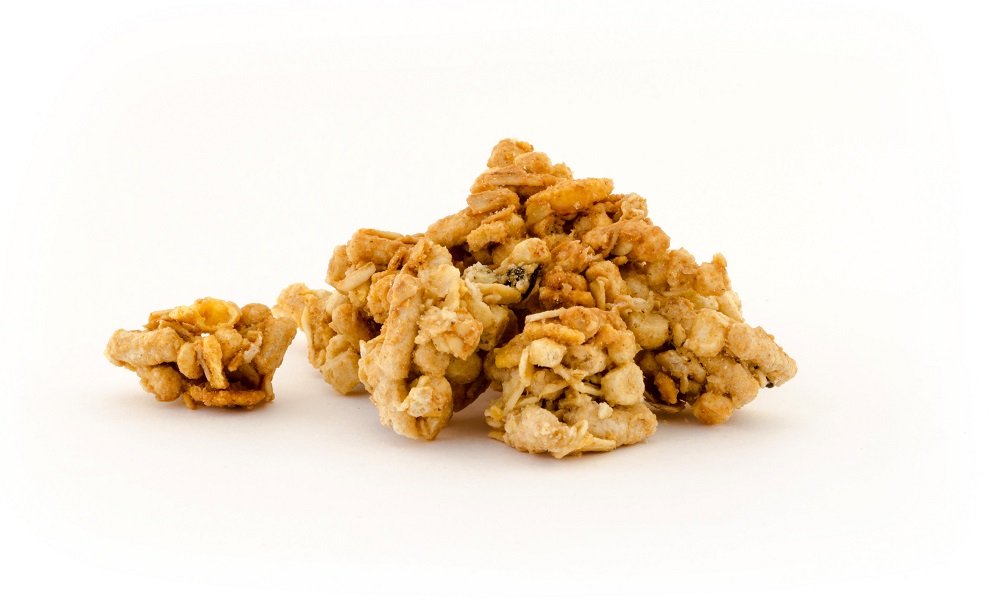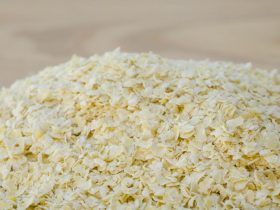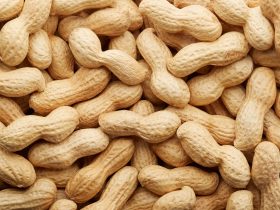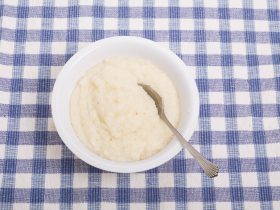Granola is a loose mixture of many types of cereals, nuts, and sometimes even fruits. Commonly consumed as either a portable snack or breakfast food, granola has become a main-stay staple for many American breakfast tables.
Because of the wide variation in ingredients and additives mixed alongside the granola’s cereal, it is often difficult to tell the exact length of time granola will remain safe to eat1.
Granola, or more specifically the cereals itself, will last up to nine months after being baked. Keep in mind that this could be shortened depending on the exact ingredients added to the mix, such as fruits or chocolate. A good rule of thumb is that the shortest shelf-life ingredient in the mix will act as the shelf-life of the entire granola mix.
Can Granola be Stored in a Humid Environment?
Humidity is one of the primary factors that contribute to both the loss of quality in stored food as well as the formation and growth of fungi and bacteria. If choosing to store any type of food, it is important to first determine the ideal relative moisture needed to extend its shelf-life before placing it in your storage environment.

As granola is practically grains and other cereals baked until dry, it is best to keep granola at the absolute minimum amount of humidity possible, as any excess moisture may reconstitute the cereals and ruin their texture, apart from causing spoilage from growth of microorganisms.
How Long Does Granola Last in the Pantry?
Granola, being primarily dehydrated carbohydrates, keeps quite well at room temperature for extended periods of time so long as several factors are accounted for when choosing to store it.
If your granola is home-baked and thus possesses none of the preservatives of sterilizing effects used by commercially produced granola, it is best to wait for the granola to cool from the oven before storing it in a dry and air-tight glass container.
If, instead, your granola has been purchased at the store, it is best to simply leave it in its original packaging within your cupboard. The expiration date on the packaging should serve as a guideline on when it is no longer safe to consume your granola.
How to Store Home-made Granola at Room Temperature
Allowing the home-baked granola to first cool before storing in an air-tight container will allow any water still present in the granola to evaporate as it undergoes evaporation from the changing temperature.
Store the container of granola in a dark and cool corner of your pantry or cupboard, ensuring that it is far away from any sources of heat.
Apart from temperature and humidity, the granola making contact with direct sunlight should be avoided, as this may cause unexpected changes to the quality of your cereals. Keep the container away from any open windows.
Storing the granola in this manner will allow it to retain its edibility and top quality for up to five months, depending on the humidity of your home.
Should Granola be Kept in the Fridge?
As previously mentioned in the last section, granola is primarily baked and dried cereals, and as such it must be kept away from moisture as much as possible.
Because of the nature of water when placed in colder environments, it is best not to keep granola in your fridge as much as possible. Condensation may form within the internal walls of the granola storage, compromising its texture and activating any dormant colonies of bacteria and fungi that may be present.
In the event that you still need to refrigerate your granola, it is best to keep it in a resealable plastic pouch with as much air as possible pushed out. Ideally, vacuum-sealing your granola is the best way to keep it at top quality while refrigerated.
Granola on average will last approximately the same length of time it would outside of the fridge – up to five months.
Can Granola be Frozen?
Choosing to freeze granola is arguably a far smarter option than simply placing it within the refrigerator, as freezing granola will actually extend its shelf-life without compromising its texture.
To begin freezing your granola, you will require a parchment-lined baking tray, resealable plastic pouches and a freezer capable of reaching temperatures as low as 32°F, as this is the temperature that water crystallizes into ice and bacteria are essentially placed into stasis.
First begin by spreading the granola evenly across your parchment lined baking sheet, ensuring that no large clumps form so as not to form any large balls that will require great time to defrost.
Place the baking tray with the granola in the freezer uncovered for approximately two hours or until any excess moisture that is present on the surfaces of the cereal has frozen. Ensure that the tray is kept away from any quick-moving air such as from a freezer fan or vent, as this will cause freezer-burn.
Remove the parchment-lined baking tray of granola from the freezer and pour the granola into your resealable plastic pouches, pushing out any excess air that may be present inside.
Leave the granola sealed within the freezer for up to nine months.
Can Granola Bars be Stored in the Same Way?
Yes, though granola bars are more susceptible to the colonization of bacteria and fungi because of binders and excess sugars present in order to help the bar maintain its shape.
In order to store granola bars, simply follow the same steps mentioned before in this article, but take extra care not to break them.
What Ingredients Make Granola Expire Faster?
While the approximate five-month shelf-life in the pantry is primarily for the dried cereals, it is possible for your granola to expire more quickly if there are other ingredients with a shorter shelf-life mixed in.
Fruit, nuts and even chocolate will all shorten and compromise the length of time your granola will stay edible, owing to the fact that bacteria will spread to the cereals once they have fed on the other ingredients.
In order to avoid this, it is best to store the individual ingredients for your granola mix separately.
As was brought up at the start of this article, the shelf-life of any multi-ingredient food is only as long as its fastest expiring ingredient. Once bacteria and fungi have taken hold, they can quickly spread to other ingredients present in your dish.
References
1. Weeks, Carly. (April 2018). “Granola bars: A healthy snack or dressed- up junk food?”. The Globe & Mail





Hi, I'm Dom
Dom Eats was started to help other people fall in love with food. While cooking can feel intimidating, it doesn't have to be.